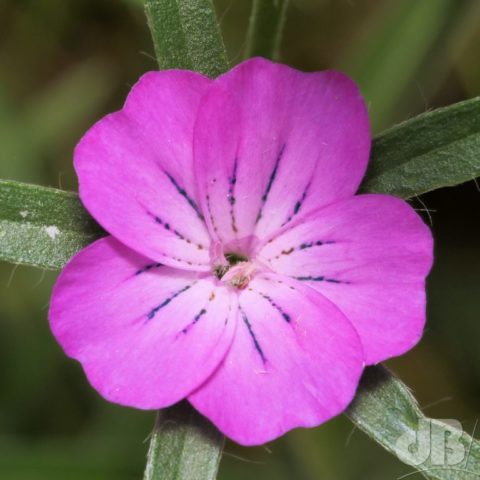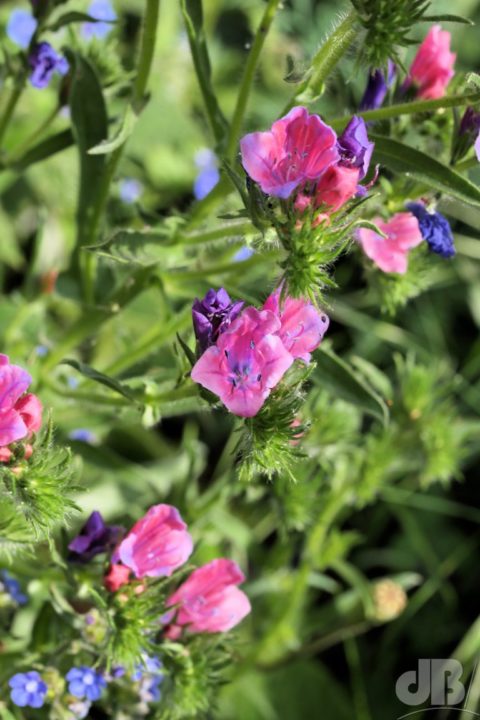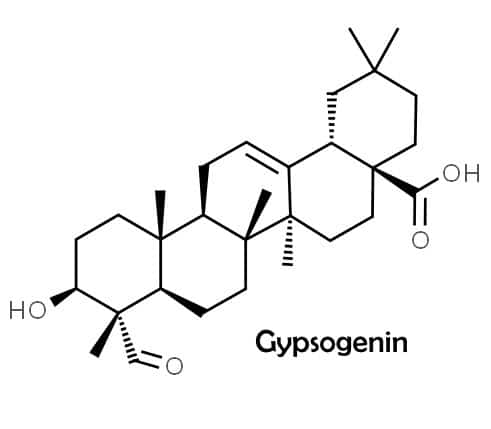Been trying to create “wild” spaces in our garden, front and back. Basically, letting whatever grows grow. Lots of Red Campion comes up, Silene dioica now. Wild mustard type plants, Wood Aven, Green Alkanet, nettles, dead nettles, Self-heal (sometimes). A plum cherry tree sprang up in the front garden, lots of fennel plants. In May 2025, I noticed a Stinking Iris.

Part of “wilding” involves scattering seeds from wildflowers…and hoping they’ll germinate and grow, flower, be pollinated, and set seed for next year. I borrowed some corn-cockle seed from a fellow #AllotmentLife person, and it’s now in bloom with invertebrates constantly in and out of the flowers.
 This wildflower species, Agrostemma githago, was thought to be extinct in the British Isles until a specimen was spotted in Sunderland of all places by a National Trust assistant ranger in 2014.
This wildflower species, Agrostemma githago, was thought to be extinct in the British Isles until a specimen was spotted in Sunderland of all places by a National Trust assistant ranger in 2014.
It was a common species to grow in wheatfields until the introduction and widespread use of herbicides. It can now be found in fields, roadsides, railway lines, waste places, and other disturbed areas, now including our back garden.
A word of warning, as with many other wildflowers, and indeed, some cultivated flowers, all parts of the plant are poisonous as they contain the natural products githagenin (githagin, gypsogenin, (3β)-3-Hydroxy-23-o

Thankfully, the corncockle has grown and bloomed in our garden since I wrote this post. Here, short discussion.
